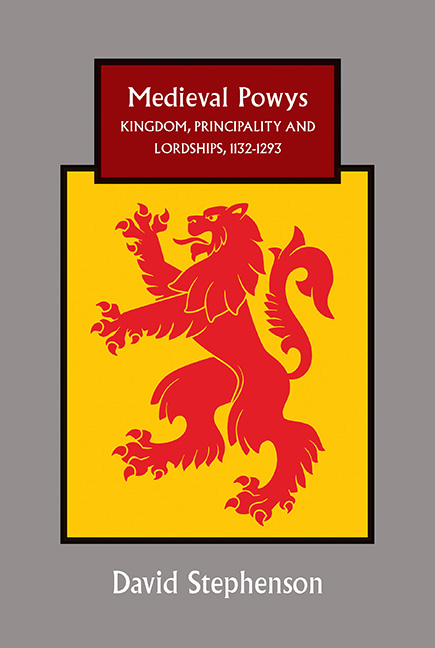Book contents
- Frontmatter
- Dedication
- Contents
- List of Illustrations
- Acknowledgements
- Abbreviations
- Map
- Miscellaneous Frontmatter
- Introduction: The problem of medieval Powys: historiography and sources
- Part I Powysian Polities in the Twelfth and Thirteenth Centuries: A Political Narrative
- Part II Characteristics of the Powysian Polities: Structures, Fault-Lines and Political Culture
- Appendices
- Appendix I The Combermere charters: a new analysis and some implications
- Appendix II Two alleged charters of Elise ap Madog
- Appendix III ‘Powys Fadog’ and ‘Powys Wenwynwyn’
- Appendix IV The date of composition of Breuddwyd Rhonabwy
- Select bibliography
- Index
- Miscellaneous Endmatter
Appendix III - ‘Powys Fadog’ and ‘Powys Wenwynwyn’
from Appendices
Published online by Cambridge University Press: 29 April 2017
- Frontmatter
- Dedication
- Contents
- List of Illustrations
- Acknowledgements
- Abbreviations
- Map
- Miscellaneous Frontmatter
- Introduction: The problem of medieval Powys: historiography and sources
- Part I Powysian Polities in the Twelfth and Thirteenth Centuries: A Political Narrative
- Part II Characteristics of the Powysian Polities: Structures, Fault-Lines and Political Culture
- Appendices
- Appendix I The Combermere charters: a new analysis and some implications
- Appendix II Two alleged charters of Elise ap Madog
- Appendix III ‘Powys Fadog’ and ‘Powys Wenwynwyn’
- Appendix IV The date of composition of Breuddwyd Rhonabwy
- Select bibliography
- Index
- Miscellaneous Endmatter
Summary
Later medieval writers such as Gutun Owain talked of a division between Powys Fadog, consisting of English and Welsh Maelor, Iâl, Cynllaith, Nanheudwy and Mochnant Is Rhaeadr and Powys Wenwynwyn, made up of Cyfeiliog, Caereinion, Y Tair Swydd and Mochnant Uwch Rhaeadr. Gutun Owain assumed that Powys Fadog derived its name from Madog ap Maredudd, an assumption shared by many later writers, but Sir John Lloyd pointed out that this was illogical, as Madog ap Maredudd had ruled both north and south Powys. Lloyd suggested that the true eponym of Powys Fadog was Madog ap Gruffudd ap Madog ap Maredudd (d. 1236) and there the matter has rested. Subsequent writers have often assumed that the division of Powys into Powys Fadog and Powys Wenwynwyn was fixed at some point in the late twelfth or early thirteenth century. But there is a problem: when we search for Powys Fadog in the record sources of the pre-conquest period it is simply not there.
After about 1202 record sources emanating from or relating to northern Powys contain scarcely any reference whatsoever to Powys by name. Indeed, even before that, the document in which Madog ap Gruffudd and Gwenwynwyn appear as principes Powisiae is cogently argued by Huw Pryce to be of highly dubious authenticity. Normally Madog, in contrast to Gwenwynwyn, did not attach to himself any territorial designation in documents issued in his name, nor does he seem to have been accorded one by other Welsh rulers or by the English government, though in his attestations of charters issued in favour of Dieulacres abbey regarding lands on the Cheshire–Powys border in the period 1229x32 he is Madoc[h] domino de Bromfeld[Brumfelde]. His father, Gruffudd ap Madog, appears on occasion in English governmental records as Gruffudd of Bromfield, the English name for Maelor, which lay at the heart of northern Powys. Madog is normally distinguished simply by his patronymic – which can on occasion make for some confusion with his kinsman and near contemporary Madog ap Gruffudd lord of Sutton and Kinnerley (in the Shropshire March). The exceptions to this pattern are the Dieulacres charters and a charter to Combermere abbey, given in 1197, in which he styles himself Madocus filius Griffini de Bromfield. Caution is needed in this last case as this is one of that group of Combermere charters argued by Huw Pryce to be spurious.
Information
- Type
- Chapter
- Information
- Medieval PowysKingdom, Principality and Lordships, 1132-1293, pp. 302 - 305Publisher: Boydell & BrewerPrint publication year: 2016
